
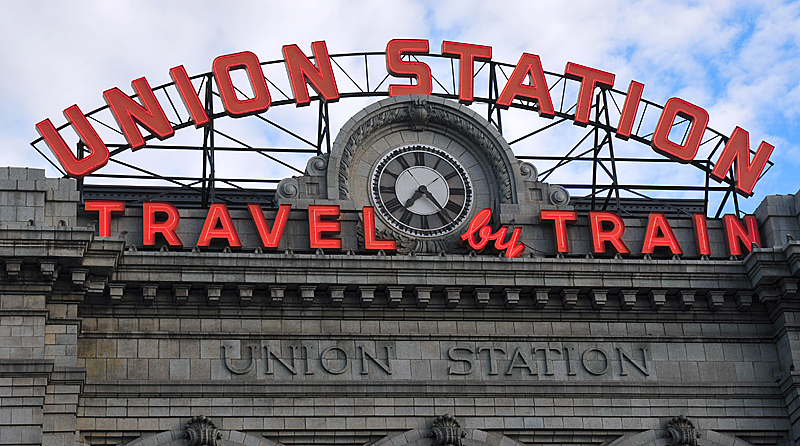





In North America, the first narrow gauge railways that normally come to mind are the Denver & Rio Grande in Colorado and New Mexico, the East Broad Top in Pennsylvania and the White Pass & Yukon in Alaska and Canada. No doubt, this is because they were the longest lasting and, in the case of the D&RGW, the biggest of them all.
Narrow gauge was indeed big starting in 1871. In 1878, 35% of common carrier railroad miles constructed that year were narrow gauge, most commonly three-foot gauge. At the peak in 1885, there were 18,529 miles of narrow gauge just in the United States. Despite a rapid decline, quite a few narrow gauge lines were still operating well into the 20th century.
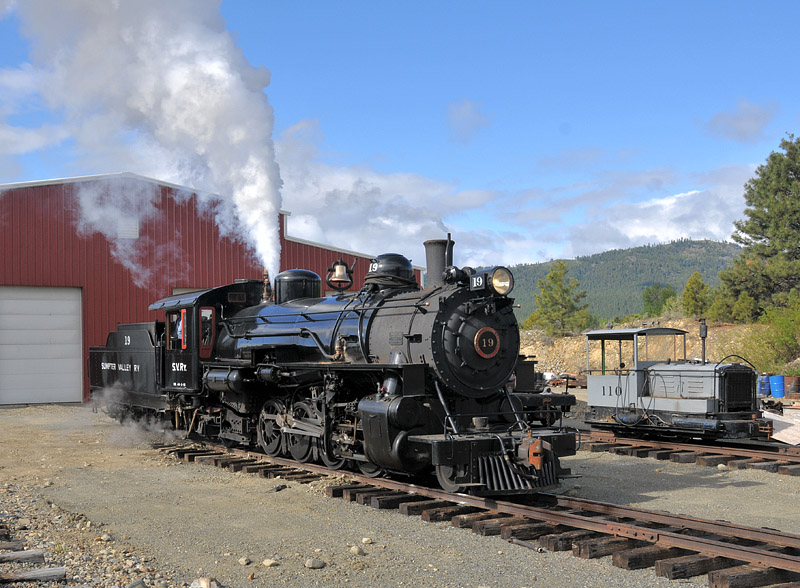
Outside the McEwen enginhouse, 19 was hot and ready to go. Unfortunately, for the rest of the morning, the 19 faced away from the morning sun.
One of these was the Sumpter Valley Railway of eastern Oregon, closely associated with the Oregon Lumber Company. David S. Eccles of Ogden, Utah created both companies. The line is probably best remembered for operating the two largest locomotives ever to run on a three-foot gauge railway in North America. Two 2-6-6-2T engines, Numbers 50 and 51, acquired from the Uintah Railway in Colorado and Utah following its abandonment in 1939, were acquired and converted to tender locomotives 250 and 251. These engines eventually went on to serve out their last years in Guatemala before finally being scrapped.
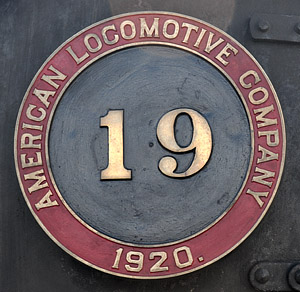
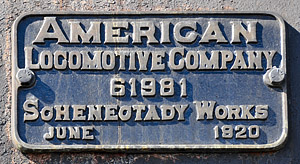
The SV began at Baker City, a town along the Oregon Railroad and Navigation Company. Like the White Pass & Yukon, the Sumpter Valley decided to build a three-foot gauge railway well after the fashion had passed. Undoubtedly, the old arguments for the economic construction and operation of a narrow gauge line were still appealing, but also there was a surfeit of good used equipment on the market as other lines converted to standard gauge. Construction began in 1890 using an engine from the recently converted Utah Northern.
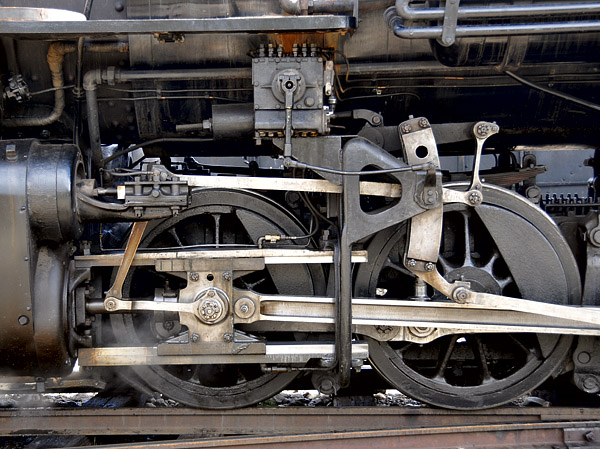
Alligators and Walschaerts.
Although the Sumpter Valley was primarily a lumber railroad, there was gold in the valley as well. Early success at mining at Sumpter gave way to trace recovery by dredge. One dredge is still at Sumpter and is open for visits; the remains of another can be seen (if you look very carefully) at McEwen. At one time, the SV main line extended 80 miles, not including temporary branches operated for the removal of timber. There was even a grand plan to connect the SV with the Nevada-California-Oregon Railway narrow gauge line.
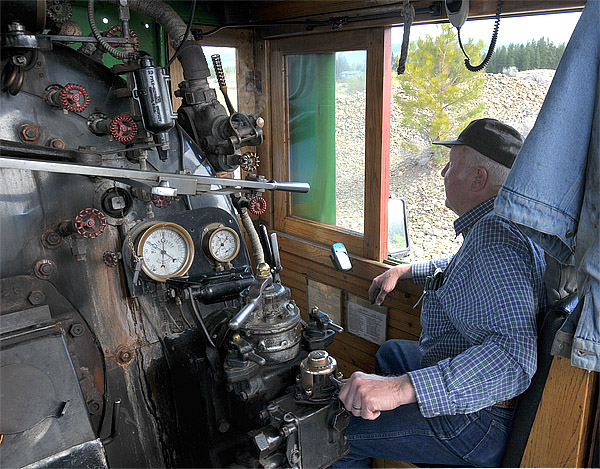
Paul van Ness, with his hand on the independent brake.
Depression and wartime took a heavy toll on the SV. Daily passenger trains continued to operate until 1937. By 1947, the last freight train ran, and the rails were pulled up.
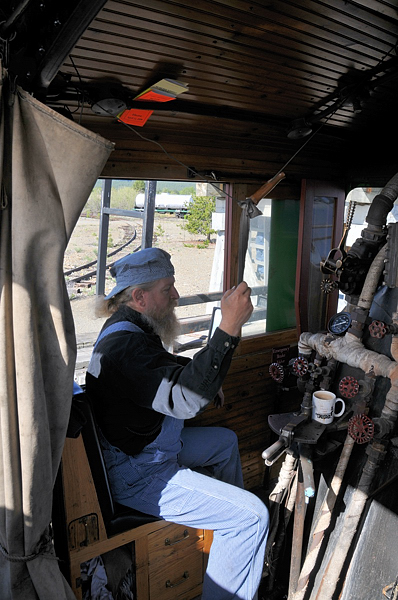
Fireman, Steve Christy, ringing the bell as 19 moves away from the enginehouse.
In January 1971, twenty-four years after the original SV stopped operations, the new Sumpter Valley was incorporated, and in 1976, the first rails were relayed. Heisler Number 3, built in 1915, was the first engine to run on the restored line. Tracks have since been relayed from McEwen as far as Sumpter, a little over six miles.
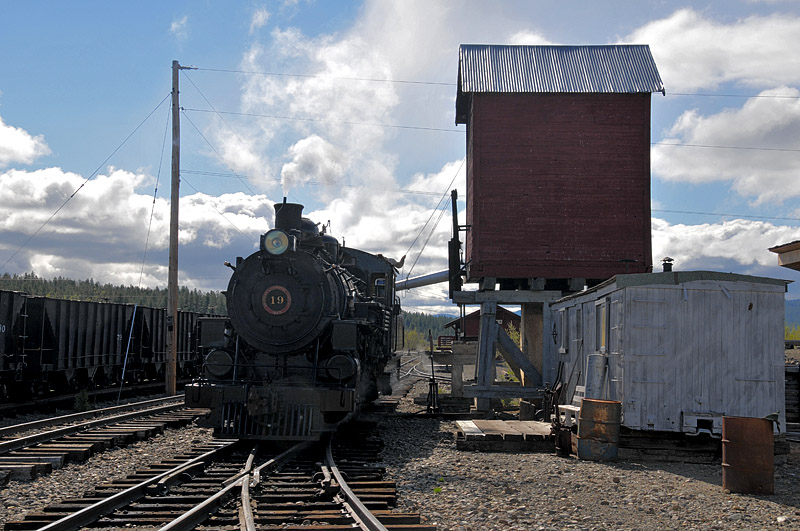
Taking water. The original SV tank was relocated from Bates, Oregon.
Mikados 19 and 20 were built by Alco for the SV in 1920. They originally burned wood and were fitted with Rushton stacks. In 1940, they were sold to the White Pass and Yukon Route where they saw heavy wartime use, but in 1977, the locomotives were repurchased from the White Pass for $1 each. Of course, the SV had to raise money for shipping them from Skagway, and of course, for extensive restoration. Today, the 19 and Heisler Number 3 are both operational, and Number 20 is slated to be restored as well.

Backing down past long ago burnt remains of a gold dredge at McEwen.

Steam and cold damp air -- too bad the engine always faced away from the sun in the morning.

Brakeman, Cynthia Christy, throws the main line switch near the current eastern end-of-track.
On the morning of the second day of a two day drive from Denver to Seattle, I had a brief opportunity to stop by McEwen and check things out. I had already arranged with Jerry Huck, Manager of Operations, for a cab ride on the first train of the day. I found Jerry over by the engine house where he introduced me to the crew and gave me the grand tour of the facilities and the equipment, unlocking doors as we made our rounds. Engine 19 was just outside the engine house and was hot and ready when I arrived. Before the tour was over, the safety valve opened spewing a cloud of steam into the clear but cool and damp Oregon sky. All that remained to do before train time was to bring the engine around, fill the tender with water and make up the train.

The crew talking over the day's operations.
Soon we were on our way to Sumpter with five of us in the sizable cab of the 19: Jerry and Scott Hutton, the Chief Mechanical Officer, joined us. The trip was an easy one for the big Mikado. We traveled along the river with piles of dredged up river rock along its banks. Pine trees lined the tracks and grew thicker approaching Sumpter. All too soon, we passed by the Sumpter Valley Gold Dredge, an Oregon State Heritage Area. Soon after, we arrived at Sumpter depot where my wife met me in the family car, and hurried me on our way.

Among the pines at Sumpter station, the end of the line for now.
Once there were nearly 350 separate narrow gauge railways in the US, not counting private companies doing no public business, mostly lumber lines and mining railroads. Most are long gone now, and many are forgotten. But the Sumpter Valley, like the Georgetown Loop, has been restored, at least in part, by a few dedicated people. As I drove away from Sumpter that morning, I couldn't help reflecting on the most amazing part of the story: the Sumpter Valley is nearly an all-volunteer operation.